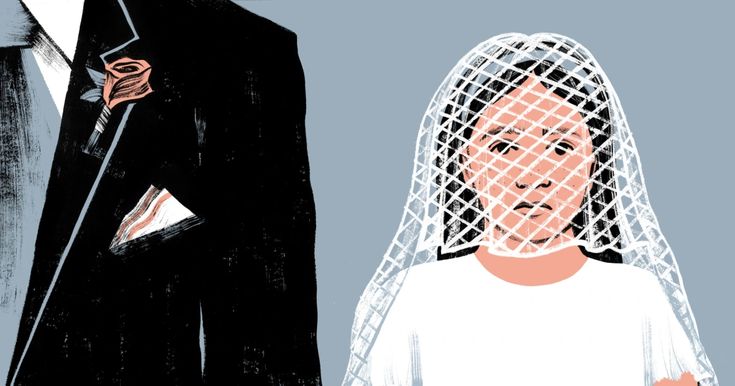
Islamic Calendar 2030: Key Dates, Events, and Insights he Islamic calendar, also known as the Hijri calendar, is central to the lives of Muslims worldwide, guiding religious observances and marking important events in Islamic history
The Islamic calendar, also known as the Hijri calendar, is central to the lives of Muslims worldwide, guiding religious observances and marking important events in Islamic history. In the year 2030, which corresponds to the Hijri year 1451, Muslims will once again follow the lunar cycles to observe major events like Ramadan, Eid al-Fitr, Eid al-Adha, and other significant religious dates. Understanding the Islamic calendar 2030 is crucial for those who want to align their spiritual practices, religious holidays, and cultural activities.
In this article, we will explore the Islamic calendar 2030, its structure, the significance of its months, key religious dates, and how it differs from the Gregorian calendar. Whether you’re planning for a special occasion or learning more about the Islamic way of marking time, this guide is designed to help you understand the key elements of the Islamic calendar.

What is the Islamic (Hijri) Calendar?
The Islamic calendar, known as the Hijri calendar, is a lunar calendar that consists of 12 months and is based on the moon’s cycles. The year begins with the month of Muharram, and each month lasts for 29 or 30 days, depending on the sighting of the moon. This means that the Islamic calendar is approximately 10–12 days shorter than the Gregorian calendar each year.
The Hijri calendar holds deep religious and historical importance for Muslims. It was established in 622 CE when Prophet Muhammad (PBUH) migrated from Mecca to Medina, a pivotal moment in Islamic history known as the Hijra. This event marks the beginning of the Islamic year.
In 2030, the corresponding Hijri year will be 1451, and like previous years, Islamic events and holidays will be guided by the phases of the moon.
Important Dates in the Islamic Calendar 2030
- Ramadan 2030
Ramadan is one of the most sacred months in the Islamic calendar, a time of fasting, prayer, reflection, and community. In 2030, Ramadan is expected to begin on the evening of January 5, 2030, and continue until February 4, 2030. However, the start and end of Ramadan depend on the moon sighting, so exact dates may vary by a day. - Eid al-Fitr 2030
Eid al-Fitr is celebrated at the end of Ramadan to mark the breaking of the fast. This festive day is a time of joy, family gatherings, and giving charity (Zakat al-Fitr). Eid al-Fitr 2030 is expected to fall on February 5, 2030, but it also depends on the moon sighting. - Hajj and Eid al-Adha 2030
The Hajj pilgrimage is one of the five pillars of Islam, performed during the month of Dhul-Hijjah. In 2030, Hajj will likely take place between June 22 and June 27, followed by Eid al-Adha on June 28, 2030. Eid al-Adha, also known as the “Festival of Sacrifice,” commemorates the willingness of Prophet Ibrahim (AS) to sacrifice his son in obedience to God’s command. - Islamic New Year 2030 (Hijri 1452)
The Islamic New Year, known as Ras as-Sanah al-Hijriyah, will likely fall on August 15, 2030, marking the start of the new year 1452 AH. This day is a time for reflection and remembrance of the Hijra. - Mawlid al-Nabi 2030
Mawlid al-Nabi, the celebration of the birth of Prophet Muhammad (PBUH), is expected to fall on April 7, 2030. This day is marked with prayers, speeches, and community gatherings to honor the life and teachings of the Prophet.
Structure of the Islamic Calendar
The Islamic calendar consists of 12 lunar months:
- Muharram: The first month of the Islamic calendar, known for the day of Ashura.
- Safar: The second month, which has no specific religious observance.
- Rabi al-Awwal: The third month, when Mawlid al-Nabi is celebrated.
- Rabi al-Thani: The fourth month.
- Jumada al-Awwal: The fifth month.
- Jumada al-Thani: The sixth month.
- Rajab: The seventh month, marking the Isra and Mi’raj (the night journey of the Prophet).
- Sha’ban: The eighth month, leading up to Ramadan.
- Ramadan: The ninth month, the holiest in the Islamic calendar, dedicated to fasting and reflection.
- Shawwal: The tenth month, beginning with Eid al-Fitr.
- Dhul-Qi’dah: The eleventh month, a sacred time for preparing for Hajj.
- Dhul-Hijjah: The twelfth month, during which Hajj and Eid al-Adha occur.

Islamic Calendar 2030 vs. Gregorian Calendar
Since the Islamic calendar is shorter than the Gregorian calendar by about 11 days each year, Islamic holidays move earlier each year by the Gregorian calendar. ( This shifting timeline means that Muslims must always stay alert to the moon phases and local announcements to know the precise dates.
Here’s the Islamic Calendar for 2030 in a table format:
| Hijri Month | Hijri Year | Gregorian Date Begins | Gregorian Date Ends |
|---|---|---|---|
| Muharram | 1451 | December 18, 2029 | January 16, 2030 |
| Safar | 1451 | January 17, 2030 | February 15, 2030 |
| Rabi’ al-Awwal | 1451 | February 16, 2030 | March 16, 2030 |
| Rabi’ al-Shani | 1451 | March 17, 2030 | April 14, 2030 |
| Jumada al-Awwal | 1451 | April 15, 2030 | May 14, 2030 |
| Jumada al-Shani | 1451 | May 15, 2030 | June 13, 2030 |
| Rajab | 1451 | June 14, 2030 | July 13, 2030 |
| Sha’ban | 1451 | July 14, 2030 | August 12, 2030 |
| Ramadan | 1451 | August 13, 2030 | September 11, 2030 |
| Shawwal | 1451 | September 12, 2030 | October 10, 2030 |
| Dhu al-Qi’dah | 1451 | October 11, 2030 | November 9, 2030 |
| Dhu al-Hijjah | 1451 | November 10, 2030 | December 9, 2030 |
Why is the Islamic Calendar Important?
For over a billion Muslims worldwide, the Islamic calendar dictates the observance of key religious practices, including fasting during Ramadan, performing Hajj, and celebrating the two Eid festivals. The calendar also serves as a reminder of Islamic history, guiding Muslims in their spiritual journey and connection with God.
- Fasting: The exact dates of Ramadan are crucial for Muslims as they prepare physically and spiritually for fasting, prayers, and reflection.
- Pilgrimage: The timing of Hajj, which is tied to specific dates in Dhul-Hijjah, is essential for those who plan their pilgrimage.
- Religious Events: Special occasions like Mawlid al-Nabi and Islamic New Year provide an opportunity for Muslims to celebrate their faith and reflect on the Prophet’s life and the beginning of the Islamic era.
Converting Gregorian Dates to Hijri in 2030
For those who are not familiar with the Islamic calendar, it can be helpful to convert Gregorian dates to Hijri dates when planning religious observances. For example:
- January 1, 2030 corresponds to Sha’ban 16, 1451 in the Islamic calendar.
- December 31, 2030 corresponds to Jumada al-Awwal 4, 1452.
Various online tools and apps are available to help users quickly convert dates between the Gregorian and Islamic calendars, which is particularly useful for scheduling events or religious duties.
Conclusion: Understanding the Islamic Calendar 2030
The Islamic calendar 2030 plays a crucial role in the lives of Muslims, marking religious observances and holidays with precision. Whether it’s the spiritual month of Ramadan, the festive celebration of Eid, or the sacred pilgrimage of Hajj, the Islamic calendar is deeply intertwined with the practice of faith. As 2030 approaches, understanding the dates and significance of each event will help Muslims around the world prepare for their spiritual and community obligations.
By following the lunar cycles, the Islamic calendar provides a constant reminder of the connection between time, nature, and worship. Whether you are planning for personal observance or community gatherings, the Islamic calendar of 2030 will guide you throughout the year.
FAQ: Frequently Asked Questions About the Islamic Calendar 2030
1. Why does the Islamic calendar differ from the Gregorian calendar?
The Islamic calendar is a lunar calendar, based on the moon’s cycles, making it about 10–12 days shorter than the Gregorian (solar) calendar. This causes Islamic dates to shift slightly each year.
2. How is Ramadan 2030 different from previous years?
In 2030, Ramadan will fall in January, whereas in previous years, it may have been in later months. This is due to the lunar nature of the Islamic calendar.
3. What is the significance of Eid al-Adha?
Eid al-Adha, also known as the “Festival of Sacrifice,” commemorates the willingness of Prophet Ibrahim (AS) to sacrifice his son. It occurs after the Hajj pilgrimage in the month of Dhul-Hijjah.
 Colors
Colors 
 Support
Support 





